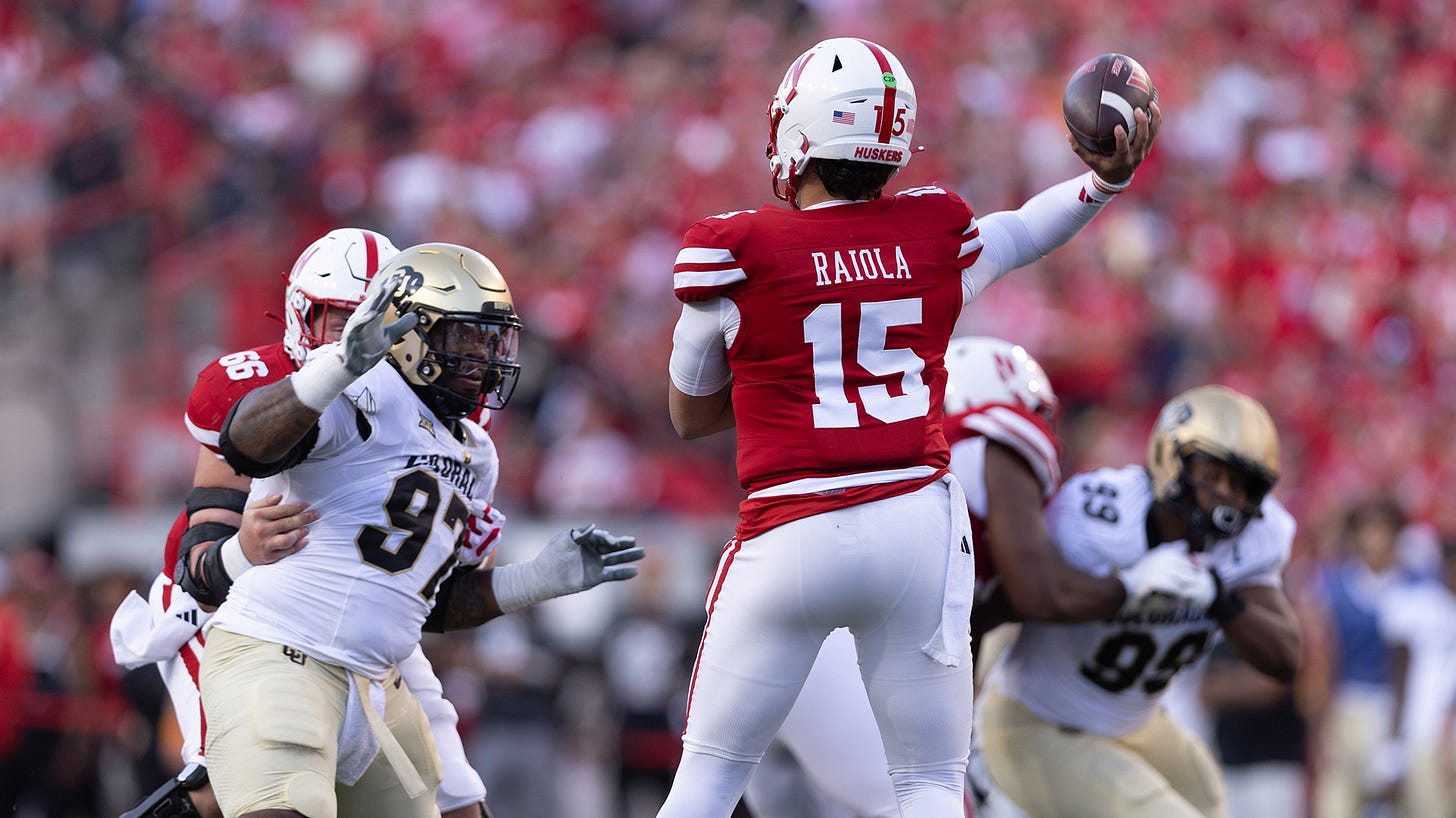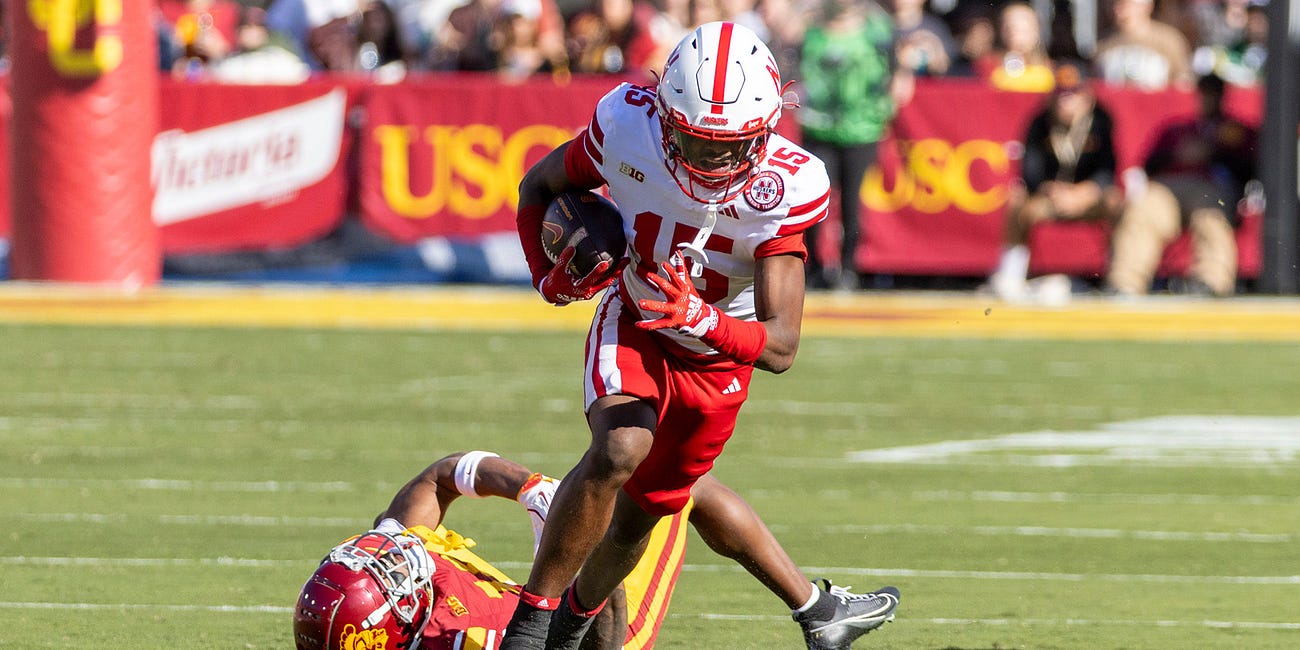The Nico Iamaleava saga at Tennessee didn’t expose anything about Name, Image and Likeness (NIL) deals in major college football. It was plain to see almost immediately that how NIL was being used had little relationship to the value of a player’s name, image and likeness. It had a lot to do with the player’s value on field.
Those things aren’t strictly unrelated—stars have more valuable personal brands, more influence for a potential business partner, than third-teamers—but major NIL collectives have effectively been paying for that star power speculatively and up-front, which isn’t all that different from the days of bagmen, no-show jobs and surprise sports cars.
Tennessee coach Josh Heupel’s decision to part ways1 with his redshirt sophomore starting quarterback, following what many called college football’s first “holdout,” simply made how NIL actually works the biggest football story of the weekend. Everyone could see what a shoddy system this is, whether they wanted to or not.
At least that was my big takeaway. It’s easy to overlook the sport’s current reality when all you want is for your team to win, but the reality is college football is not healthy.
The scarier thing is I’m not sure how it gets healthy.
When UCLA basketball star Ed O’Bannon (and a group of other college athletes) sued the NCAA, the Collegiate Licensing Company and EA Sports in 2009 for using his likeness in a popular video game, I remember it being pretty easy to side with the athletes. There were some pure amateurism holdouts, sure, but with this lawsuit forcing people to confront what was actually happening that became a tougher argument to make. If you turned on NCAA Football 11, another popular EA video game, while that suit was still working through the courts, Nebraska’s “QB#3” wasn’t named Taylor Martinez and his pixelated image wasn’t a spitting image, but he had Martinez’s number, was Martinez-sized and Martinez-fast. Everyone knew it was him. The game was better because he was him and so was everyone else.
When forced to confront this rather than just accept it as “how it’s always been,” that these players couldn’t get any compensation for something like this started to feel absurd.2
Fast forward a decade and the NIL era dawns. If a local gym or a telecom giant thinks it can do more business by partnering with an athlete, have at it. That, I think, is what people thought this would be—the De’Coldest Crawford air conditioning commercial over and over again. There was even the idea that programs like Nebraska—fervent fan base, biggest show in town—would have an advantage over, say, a Miami, where public interest is a competitive game. In terms of NIL potential, better to be a Husker than a Hurricane.
That makes sense, but only if it actually worked that way.3 As was broadcast widely via Iamaleava’s departure from Tennessee, what we actually have is this: Donors contribute to a collective, the collective pools that money and distributes it based on the market and on-field needs and only then does anyone even think about how this is for NIL. Iamaleava, as far as we know, didn’t ask for more sponsorship opportunities so he could earn more NIL dollars, he just asked for more money.
That’s the key and this is a thorny problem to solve. Revenue sharing is coming. The House settlement wasn’t approved last week, as many expected it would be, but it will be eventually. In that world, instead of collectives trying to wrangle as much money as they can to spend on players, universities will have up to $20.5 million in 2025 to distribute in a way they feel gives their teams the greatest competitive advantage.
If that was the new landscape in totality, maybe things would level out. But it’s not. NIL will still exist on top of the revenue share. The NCAA can’t limit those opportunities now. Not without being sued immediately. The horse is out of the barn.
Instead, the NCAA is trying to put reins on the horse. One of the concessions it pushed for in the prospective House settlement was for any NIL deal over $6004 to require approval from a clearinghouse that would determine if it was for legitimate business purposes…like a Lincoln coffee shop looking to sell a few more lattes with the help of a linebacker.
Unsettled times
On Monday, U.S. District Judge Claudia Wilkin was expected to approve the proposed settlement between the NCAA and a group of attorneys representing college athletes, past, present and future. Instead, Wilkin had questions and a request for lawyers on both sides, asking them to reconsider immediately implementing proposed roster limits.
It’s a well-meaning idea, but nobody in college circles seems to think the NCAA will have the manpower or the teeth to actually enforce this. Even if it did, would this throttling of opportunity hold up in court?
We won’t know until we get there, which, when I tried to work through potential solutions in my head, ended up being the root problem with all of them—it’s hard to graft professionalism onto amateurism. If it were easy, we wouldn’t need the distinction.
We’re in a time of half-measures and limit-testing, a volatile combination. The answers only seem to exist at the extreme ends of the scale, which is equidistant from where we’re at. The NCAA could theoretically solve this by going full-on professional. Pay the players for the service they actually provide instead of making concessions that disguise it as something else. Professionalism, however, has always been the bridge the NCAA won’t cross.
The other, more unlikely option, is a return to the way things were. If a group of teams opted out of revenue sharing—which they can do—and didn’t limit players’ NIL opportunities but also did nothing to facilitate them and use them as a recruiting enticement, would those programs be able to survive if they banded together? Would you want, as a fan, Nebraska to be a part of the professional league or the amateur-plus-honest-NIL league?5 Does it matter if the most the Huskers can win is a title that’s viewed as only nine rungs up a 10-rung ladder?
All complicated questions. All novel questions at a place with the history of a Nebraska or a Tennessee. All questions that weren’t generated by Nico Iamaleava or Tennessee.
They just found themselves here, in the uncertain middle ground of an American institution, through a series of events like everyone else.
The Tennessee spring game ended in a tie, 14-14, which feels about right.
In case you’re not fully up to speed, here’s the short version. Iamaleava signed with Tennessee as a blue-chip recruit with a reported NIL deal worth $8 million over four years. Tennessee’s attorney general sued the NCAA after it started investigating this recruitment. The NCAA settled, chased off by (you guessed it) antitrust concerns. Iamaleava was the Vols’ starter in 2024 and was decent, not great, as Tennessee made the playoff. Late last week, reports emerged of Iamaleava seeking an increase to around $4 million per year. He skipped practice and team activities Friday—where the “holdout” talk comes from—and on Saturday, the day of Tennessee’s spring game, Heupel announced UT was moving on.
Also absurd, the flimsiness of the technicality that made it so: “Well, it doesn’t have his name or image.” The irony of this era—and I fiercely loved those games—was right there on the cover. The game, released in July for the season ahead, always included a player from last year on the cover. A player who had exhausted his eligibility and could thus be paid for his participation.
To be clear, sometimes it does—the Crawford commercial, Muchacho’s Pipeline burrito, a player selling his own merchandise—but it’s so rare that the once unsavory idea of players as pitchmen almost feels wholesome at the local level.
For those scoring at home, that’s 0.000075% of Iamaleava’s reported $8 million deal. This clearinghouse will be quite busy.
Such a splinter group would essentially be the Ivy League as it previously existed. This is changing, like everything else, but the traditional Ivy League opted out of the football rat race, declining to make its teams available for the FCS Playoffs. If you rooted for Brown, the ultimate prize was simply a conference title. I always appreciated this simplicity, even as someone with no connection to Brown or any of the others. Congrats on deciding rather than gradual concessions.





Excellently researched and written. Makes me sad though. I do not like the direction this is going. And momentum being what it is, I don't think here is anyway to turn the ship.
I can see a delay in the 105 roster limits. But the cynical part of me thinks it's so that the redistribution of talent is delayed long enough to really emphasize that there are haves and have nots.
With 50 teams in the BIG SEC and the Big 12 and a multi Billion TV contract the SEC has pushed the limits(cheated) no matter the ruling of the courts and the NCAA. The big boys want to play hard ball and take the neighbor kids toys when they can. I dont think anybody can deny big oil the right to claim "They just care more". I think an increase in the105 would benefit us the most. I think there will more kids like MB that will be lied to and find themselves with no place to land.